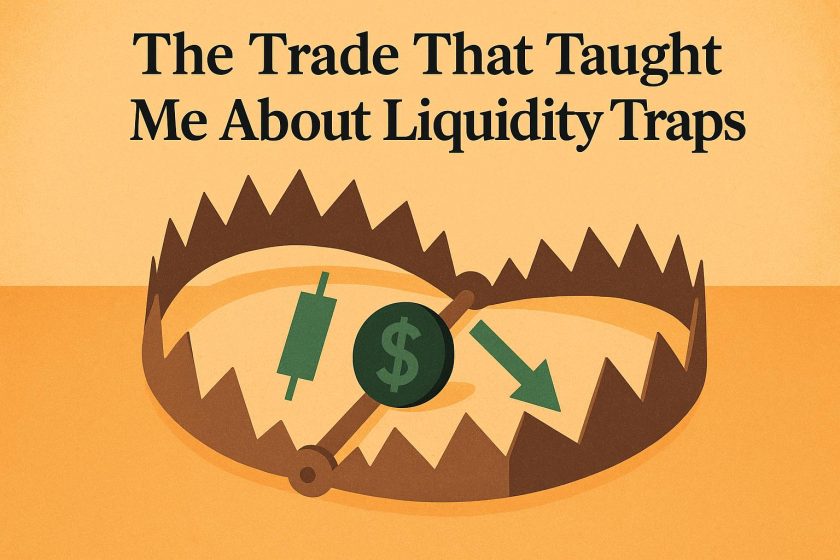Understanding Liquidity Traps through Personal Experience
In the intricacies of finance and economics, a liquidity trap stands as a particularly challenging phenomenon, often difficult to fully understand without direct experience. The theoretical framework of a liquidity trap was something I was aware of on an intellectual level. However, it wasn’t until a particularly intricate trade scenario that I began to truly comprehend its ramifications. This first-hand experience served as an illuminating real-world example, shedding light on what is often discussed in theoretical economics but less frequently observed with clarity.
What is a Liquidity Trap?
A liquidity trap emerges when a country’s interest rates are exceedingly low, yet the propensity to save remains disproportionately high. This situation effectively renders conventional monetary policy useless. Despite monetary incentives intended to encourage borrowing — such as reduced interest rates — both consumers and businesses choose to hoard cash. This cautionary tendency results in stagnant economic growth. In other words, no matter how favorable borrowing conditions might be, the expected ripple effect of economic stimulus is absent, as consumers and businesses are reluctant to engage in spending or investing.
The Trade that Highlighted the Trap
Looking back, several years ago, I found myself immersed in a trade that starkly highlighted the dynamics of a liquidity trap. During that time, central banks worldwide were aggressively reducing interest rates, a strategy aimed at stimulating economic activity. It was expected that these conditions would lead to a flurry of economic engagement and revitalization. However, contrary to the anticipated result, the economic boost that lower interest rates were supposed to bring did not come to fruition.
As part of my investment strategy during this period, I operated under the assumption that reduced interest rates would act as a catalyst for business investments and consumer spending, thereby improving company earnings and driving up stock prices. Nonetheless, the unfolding reality was quite different.
The Reality of Consumer Behavior
Instead of the increased financial activity I expected, it became evident that both businesses and consumers were opting to cling to their cash reserves. This behavioral tendency can largely be attributed to prevailing uncertainty regarding the future economic landscape. This uncertainty instilled a precautionary savings mindset among both businesses and individuals. As a result, neither group was inclined to commit to increased spending or investment. Even as money was readily available to borrow at low rates, the expected hike in demand for investments did not come to pass, leaving the economy in a state of stagnation.
Policy Implications
From the standpoint of policy-making, encountering a liquidity trap introduces a set of formidable challenges. The conventional tools — primarily interest rate adjustments — lose their traditionally reliable effectiveness. Consequently, policymakers might need to pivot toward alternative strategies, which often involve fiscal policy interventions as opposed to purely monetary solutions. For instance, government spending could be increased or tax policies adjusted to stimulate demand more directly. Understanding these intricate dynamics is crucial to devising strategies that could help bypass similar economic pitfalls in the future.
Lessons Learned
This trade experience turned out to be an invaluable lesson highlighting the significance of understanding broader economic conditions. It became clear that relying solely on interest rate movements to predict market behavior and economic trajectories is an oversimplification. In addition to monitoring interest rates, it’s imperative to gauge overall economic sentiment and understand the behavior of market participants, as these elements have substantial impacts. Recognizing the early signs of a liquidity trap can lead to more informed investment decisions and help in setting realistic expectations regarding economic recovery trajectories.
Further Exploration
For those who wish to explore the mechanics and implications of liquidity traps more deeply, there is a wealth of economic literature that delves into this subject matter. Many renowned economic publications and institutions offer insights into this phenomenon, often enriched with historical examples and case studies. A pragmatic starting point for in-depth exploration would be perusing analyses provided by reputable financial institutions or economic think tanks. These resources frequently deliver valuable perspectives that deepen the understanding of liquidity traps, offering both theoretical and applied insights that can inform better strategies and decisions in the realm of finance and economics.
This article was last updated on: September 8, 2025
